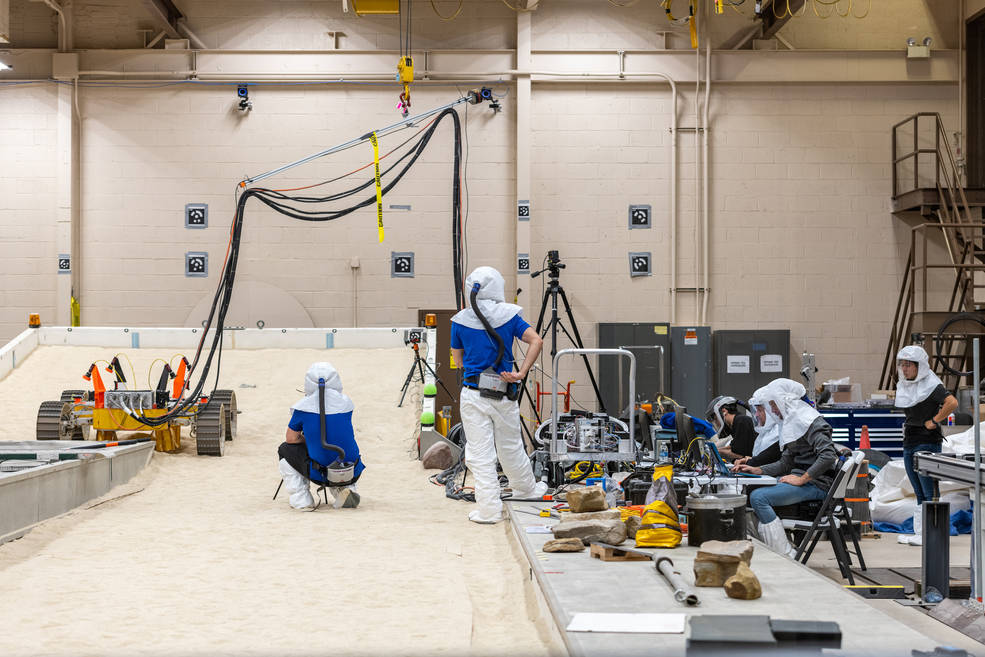
An global investigate workforce learned nanoscale improvements in strong-point out batteries that could lead to enhanced general performance. They discovered significant-frequency vibrations at the electrolyte-electrode interface that hinder lithium ion motion, probably paving the way for new techniques to enhance ionic conductivity.
A world wide crew of scientists, which includes nanoengineers from the University of California San Diego, has learned By utilizing computer simulations and X-ray experiments, the researchers were able to “see” in detail why lithium ions move at a slow pace within a solid electrolyte, particularly at the interface between the electrolyte and electrode. The research showed that increased vibrations at the interface hinder the movement of lithium ions more than in other parts of the material. These discoveries, published on April 27th in the journal Nature Materials, could result in the development of novel approaches to improve ionic conductivity in solid-state batteries.
Solid-state batteries, which contain electrolytes made of solid materials, hold the promise of being safer, as well as longer lasting and more efficient, than traditional lithium-ion batteries with flammable liquid electrolytes.
But a major issue with these batteries is that the movement of lithium ions is more restricted, particularly where the electrolyte makes contact with the electrode.
“Our ability to make better solid-state batteries is hindered by the fact that we do not know what exactly is happening at the interface between these two solids,” said study co-senior author Tod Pascal, a professor of nanoengineering and chemical engineering and member of the Sustainable Power and Energy Center at the UC San Diego Jacobs School of Engineering. “This work provides a new microscope for looking at these sorts of interfaces. By seeing what the lithium ions are doing and understanding how they move through the battery, we can start engineering ways to get them back and forth more efficiently.”
For this study, Pascal teamed up with his longtime collaborator, Michael Zuerch, a professor of chemistry at UC Berkeley, to develop a technique to directly probe lithium ions at the interface. Over the past three years, the two groups have worked on developing an entirely new spectroscopic approach for probing buried, functional interfaces, such as those present in batteries. Pascal’s lab led the theoretical work, while Zuerch’s lab led the experimental work.
The new technique that they developed combines two established approaches. The first is X-ray adsorption spectroscopy, which involves hitting a material with X-ray beams to identify its atomic structure. This method is useful for probing the lithium ions deep inside the material, but not at the interface. So the researchers used a second method, called second harmonic generation, which can identify atoms specifically at an interface. It involves hitting atoms with two consecutive pulses of high-energy particles—in this case, high-intensity X-ray beams at a specific energy—so that electrons can reach a highly energized state, called a double excited state. This excited state does not last very long, which means that the electrons eventually return to their ground state and release the adsorbed energy, which is subsequently detected as a signal. The key here is that only certain atoms, such as those at an interface, can undergo this double excitation. As a result, the detected signals from these experiments would necessarily and only provide information about what is happening right at the interface, explained Pascal.
The researchers used this technique on a model solid-state battery that consists of two commonly used battery materials: lithium lanthanum titanium oxide as the solid electrolyte and lithium cobalt oxide as the cathode.
To verify that the signals they saw were indeed coming from the interface, the researchers performed a series of computer simulations, based on methods developed in Pascal’s research group. When the researchers compared the experimental and computational data, they found that the signals matched almost exactly.
“The theoretical work enabled us to fill in the blanks and provide clarity on the signals that we were seeing in the experiments,” said study co-first author Sasawat Jamnuch, a nanoengineering Ph.D. student in Pascal’s research group who recently defended his doctoral thesis. “But a bigger advantage of the theory is that we can use it to answer additional questions. For example, why do these signals appear the way they do?”
Unlocking ion movement at the interface
Jamnuch and Pascal took the work a step further. They modeled the dynamics of the lithium ions in the solid electrolyte and uncovered something unexpected. They found that high-frequency vibrations were occurring at the electrolyte interface, and these vibrations were further restricting the movement of lithium ions compared to the vibrations in the rest of the material.
“This is one of the major findings of this study that we were able to extract with the theory,” said Jamnuch. Battery researchers have long suspected that incompatibility between the solid electrolyte and electrode materials was restricting the movement of lithium ions at the interface. Now, Jamnuch, Pascal, and colleagues show that something else is also at play.
“There is actually some intrinsic resistance to ion motion in this material right at the interface,” said Pascal. “The barrier for lithium ions to get through is not just a function of the two solid materials being mechanically incompatible with each other, it’s also a function of the vibrations in the material itself.”
He described the barrier to ion movement as similar to what a ball would experience if it was bouncing inside a room where the walls were also moving.
“Imagine a room with a ball at the back, and the ball is trying to move to the front,” he said. “Now also imagine that the sides of the room are also moving, back and forth, which causes the ball to bounce from side to side. The total energy is conserved, so if the ball is bouncing more from side to side, it has to move less from back to front. In other words, the faster the sides are moving, the more time the ball spends bouncing around, and the longer it takes to make it to the front. Similarly, in these solid-state batteries, the path that the lithium ions take to get through the material is impacted by the fact that the material itself is vibrating at a higher frequency at the interface than in the bulk. So even if there was perfect compatibility between the electrolyte and electrode materials, there would still be resistance to lithium diffusion through the interface because of these high-frequency vibrations.”
Thanks to their computational work, the researchers lay the groundwork for future solid-state battery designs.
“One idea would be to slow down the vibrations at the interface of the solid electrolyte material,” said Jamnuch. “You can do that by doping the interface with heavy elements, for example.”
“Now that we understand more about how lithium ions get through this system, we can rationally engineer new systems that will make it easier for ions to get through,” said Pascal. “We found new knobs to turn, new ways to optimize these systems.”
Reference: “Probing lithium mobility at a solid electrolyte surface” by Clarisse Woodahl, Sasawat Jamnuch, Angelique Amado, Can B. Uzundal, Emma Berger, Paul Manset, Yisi Zhu, Yan Li, Dillon D. Fong, Justin G. Connell, Yasuyuki Hirata, Yuya Kubota, Shigeki Owada, Kensuke Tono, Makina Yabashi, Suzanne G. E. te Velthuis, Sanja Tepavcevic, Iwao Matsuda, Walter S. Drisdell, Craig P. Schwartz, John W. Freeland, Tod A. Pascal, Alfred Zong and Michael Zuerch, 27 April 2023, Nature Materials.
DOI: 10.1038/s41563-023-01535-y
The study was partly funded by the National Science Foundation and the U.S. Department of Energy Basic Energy Sciences. This work was also partially supported by the NSF through the UC San Diego Materials Research Science and Engineering Center. The researchers also acknowledge funding from the UC Office of the President within the Multicampus Research Programs and Initiatives.





